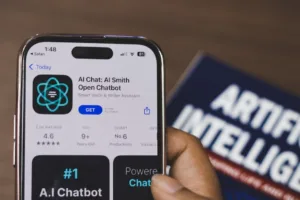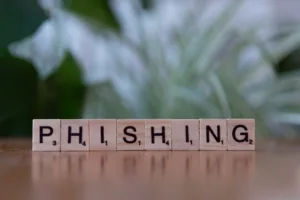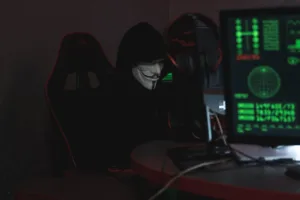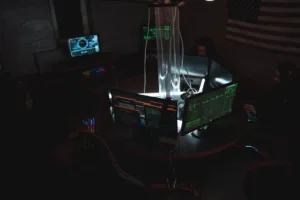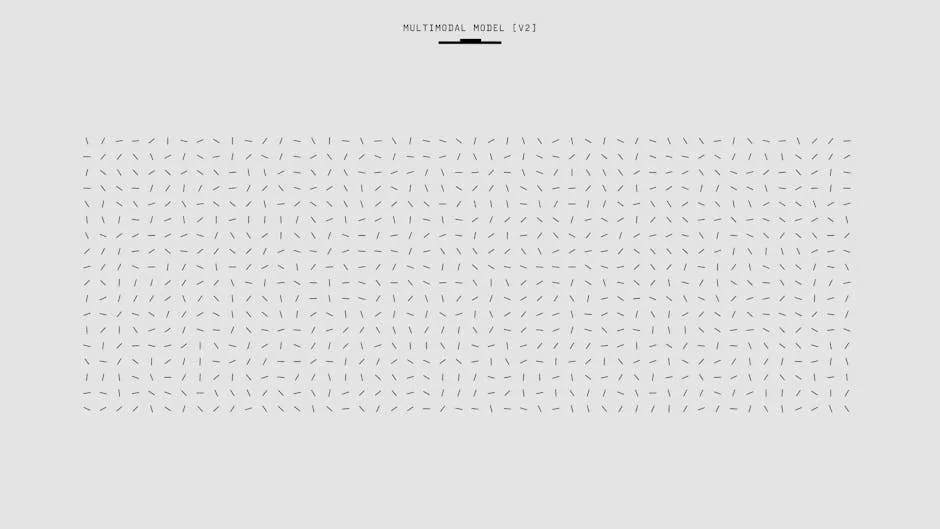
Signal has completed a significant cryptographic upgrade to its protocol with the introduction of the Sparse Post-Quantum Ratchet (SPQR)1. This new component forms a “Triple Ratchet” alongside the established Signal Protocol, creating a hybrid system designed to protect user communications from both current threats and future attacks from quantum computers2. This multi-year, phased initiative ensures the protocol’s core security properties of forward secrecy and post-compromise security remain effective in a post-quantum world3.
Executive Summary for Security Leadership
Signal has deployed a critical, two-phase cryptographic enhancement to counter the “harvest-now-decrypt-later” threat posed by quantum computing. The final phase, SPQR, integrates a NIST-standardized, quantum-resistant algorithm into the core messaging protocol, creating a “Triple Ratchet” that requires an attacker to break both classical and post-quantum cryptography. This upgrade is transparent to users, maintains backward compatibility, and is backed by formal verification.
- Threat Addressed: Protection against future quantum computers capable of breaking current elliptic-curve cryptography (ECDH).
- Solution Deployed: A “Triple Ratchet” combining the existing Double Ratchet with the new Sparse Post-Quantum Ratchet (SPQR).
- Core Technology: Integration of the NIST-standardized ML-KEM 768 algorithm for ongoing key agreement.
- Key Feature: Hybrid security model where an attacker must break both classical ECDH and post-quantum ML-KEM to compromise a session.
- User Impact: Zero. The update is automatic and seamless, with backward-compatible fallback for users on older app versions.
The Quantum Threat and Signal’s Phased Mitigation
The security of the widely adopted Signal Protocol, and much of modern cryptography, relies on the computational difficulty of problems like Elliptic-Curve Diffie-Hellman (ECDH). While currently secure, these algorithms are known to be vulnerable to Shor’s algorithm, which can be run on a sufficiently powerful quantum computer1. This creates a long-term risk where an adversary can intercept and store encrypted communications today, with the intention of decrypting them once quantum computing becomes practical3. Signal’s response to this threat was methodical, unfolding in two distinct phases. The first phase, announced in September 2023, was the PQXDH (Post-Quantum Extended Diffie-Hellman) protocol7. PQXDH fortified the initial key agreement handshake when two users start a new conversation by combining the classical X25519 elliptic curve with the post-quantum CRYSTALS-Kyber, now standardized as ML-KEM7. While PQXDH secured the introduction, the newly announced SPQR represents the critical second phase, extending quantum resistance to the entire lifecycle of a conversation, protecting every subsequent message exchange14.
Architecting the Triple Ratchet with SPQR
The SPQR system is not a replacement for the proven Double Ratchet but an augmentation, resulting in a hybrid “Triple Ratchet”13. The Sparse Post-Quantum Ratchet itself operates by continuously generating new shared secrets using the NIST-standardized ML-KEM 768, a quantum-resistant Key-Encapsulation Mechanism46. A key engineering challenge was the size of the ML-KEM keys; where traditional ECDH uses compact 32-byte keys, ML-KEM employs a 1,184-byte Encapsulation Key (EK) and a 1,088-byte Ciphertext (CT)1. The core of the Triple Ratchet’s security is the combination of keys from both systems. When a Signal client sends a message, it derives one key from the classic Double Ratchet and a second, independent key from the SPQR component. These two keys are then fed into a Key Derivation Function (KDF) to produce the final symmetric key used for message encryption16. This design means that to decrypt any message, an attacker must break both the classical elliptic-curve cryptography and the post-quantum ML-KEM, providing a robust defense-in-depth strategy.
Comparative Analysis: Signal’s SPQR vs. Apple’s PQ3
The move to post-quantum cryptography is not unique to Signal, and a technical comparison with Apple’s PQ3 protocol for iMessage reveals different design philosophies. An analysis by the Cloud Security Alliance highlights key distinctions8. A fundamental difference lies in authentication. Apple’s PQ3 uses digital signatures, which leverage their secure enclave hardware and provide non-repudiation, meaning a third party can cryptographically verify who sent a message. In contrast, Signal uses Message Authentication Codes (MACs), which allow for repudiation and are aligned with its principle of minimizing metadata and preserving user anonymity8. Another critical distinction is in the approach to ongoing post-quantum re-keying. The CSA analysis notes that Apple’s PQ3 integrates a new post-quantum key into its key derivation every 50 epochs, which provides a form of post-quantum post-compromise security. While SPQR provides continuous post-quantum key generation for the session, the specific re-keying frequency against a quantum adversary after a device compromise is a nuanced technical detail highlighted in this competitive analysis8. The underlying philosophy also differs; the CSA concludes that Signal’s architecture is built to minimize data exposure and obfuscate user relationships, whereas Apple’s closed ecosystem is designed to protect its registered user base without necessarily hiding them from the company itself8.
Engineering Innovations for Real-World Deployment
Integrating large post-quantum keys into a real-time messaging protocol presented significant performance and bandwidth challenges, which Signal solved with several innovative techniques1. To avoid bloating every message with over a kilobyte of new key material, SPQR employs erasure coding. This technique breaks the large ML-KEM ciphertext into multiple small chunks that are sent sporadically with regular messages46. This design is resilient to network packet loss, as only a subset of the chunks is needed to reconstruct the original key. It also provides traffic analysis resistance by preventing a network-level attacker from easily identifying and blocking dedicated key-exchange messages1. Signal also developed the “ML-KEM Braid,” a method that allows parts of the key and ciphertext to be transmitted in parallel, making more efficient use of the available message capacity1. Furthermore, the protocol’s state machine was designed to generate new secrets serially. Signal’s engineers found through simulation that while parallel generation is faster, it exposes more future message epochs to risk if a single device is compromised, leading them to optimize SPQR’s design for security over raw speed1.
Security Rigor and Formal Verification
The development of both PQXDH and SPQR was grounded in academic research and exceptional engineering rigor17. The protocols build upon peer-reviewed papers presented at top-tier security conferences, with contributions from researchers at PQShield, AIST, and NYU1. A cornerstone of Signal’s development process is the integration of formal verification from the very beginning, not as a final audit step. The team used tools like ProVerif to model and mathematically prove the security properties of the protocol during the design phase1. Perhaps more notably, Signal uses a tool called `hax` to automatically translate their Rust implementation into the F* formal verification language on every code commit. This continuous process proves the correctness of the implementation and ensures the code is free from panics, a class of runtime errors16. This level of rigor is becoming an industry standard for critical cryptographic upgrades, with Apple also employing similar formal methods for its PQ3 protocol8.
Relevance and Strategic Implications
The successful deployment of the Triple Ratchet is a landmark in applied cryptography. For security professionals, it represents a proactive and practical implementation of post-quantum standards that other systems will likely emulate. The “harvest-now-decrypt-later” threat means that data encrypted today with vulnerable algorithms could be exposed in the future. Signal’s transition demonstrates a viable path for other communication platforms and data-at-rest encryption systems to follow. The technical solutions for bandwidth efficiency, such as erasure coding, and the emphasis on formal verification provide a blueprint for secure software development. The seamless, backward-compatible rollout is a case study in managing a critical cryptographic transition for a massive user base without causing disruption or requiring user action, a key consideration for enterprise-scale deployments.
Conclusion
Signal’s completion of its post-quantum transition with the SPQR Triple Ratchet marks a significant achievement. By building on the foundation of PQXDH and augmenting the core Double Ratchet, Signal has ensured its security guarantees extend into the quantum era. The implementation showcases a careful balance of cutting-edge cryptography, practical engineering to overcome performance hurdles, and a rigorous, formally verified development process. This multi-year project underscores a long-term, principled commitment to security, setting a high standard for the entire industry and ensuring that private communications remain protected against the evolving capabilities of adversaries.
